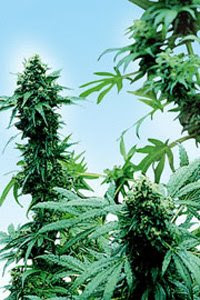 Humankind’s close relationship with cannabis stretches back to prehistoric times. Since then, cannabis has been an essential precursor to several key stages of human development. Given our planet’s unquestioned need for a sustainable future, our relationship with this most versatile of crops needs to be re-examined and renewed for the 21st Century.
Humankind’s close relationship with cannabis stretches back to prehistoric times. Since then, cannabis has been an essential precursor to several key stages of human development. Given our planet’s unquestioned need for a sustainable future, our relationship with this most versatile of crops needs to be re-examined and renewed for the 21st Century.Cannabis sativa L. is the scientific name given to the cannabis or hemp plant in 1753 by the Swedish botanist Carolus Linneaeus. The botanical term sativa simply means ‘sown’ and is applied to the cultivated or common form of many agricultural crops. As a botanical name Cannabis sativa L. is used as a blanket term to cover the wide spectrum of regional and breeding variations within the cannabis family.
Fibre-producing ‘industrial hemp’ and medicinally active ‘marijuana’ are both points within the spectrum and both may be referred to as Cannabis Sativa L., or simply cannabis.
The term ‘hemp’ may also be used interchangeably with ‘cannabis’ to refer to all plants in the family. However, in modern usage, ‘hemp’ usually refers to cannabis grown for its fibre.
Similarly, it is important to note that within the spectrum of cannabis, the term ‘Sativa’ also has meaning pertaining to a particular type of plant with certain characteristics.
Cannabis grows in its fibre, medicinal and psychoactive forms, cultivated or wild, on every inhabited continent. Almost every culture in history has made use of one or more of these forms and many have also used hemp seed as a highly nutritious food source.
The geographical origin of wild cannabis is unclear. In all probability wild hemp was widely distributed throughout
The value of cannabis as an ecologically sound, renewable resource is almost impossible to overstate. It is and always has been one of the most valuable crops on Earth.
Geen opmerkingen:
Een reactie posten